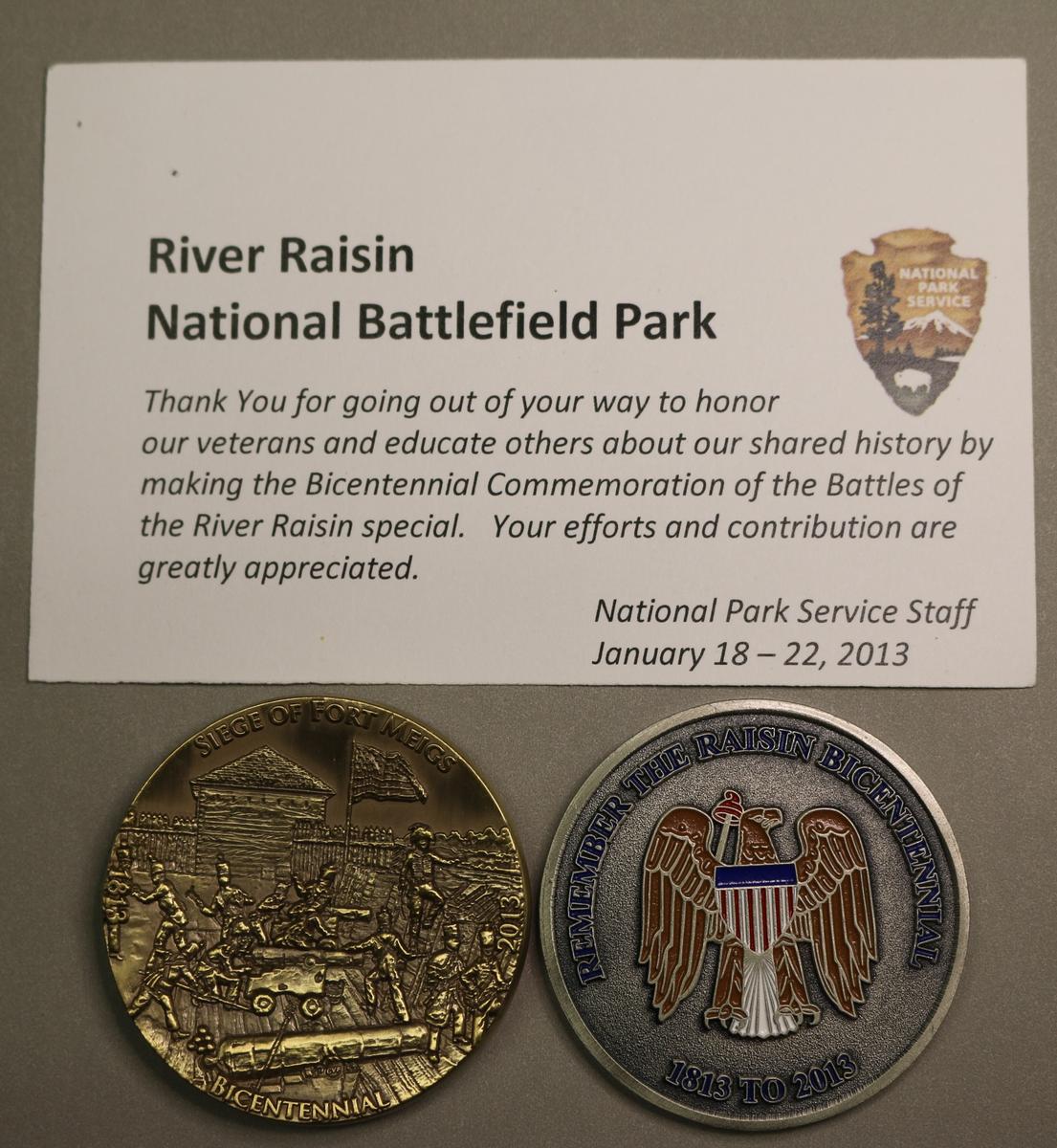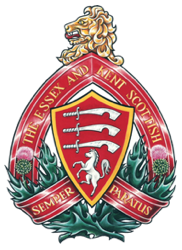Battles of Frenchtown, 18-23 January 1813

Commemorative coin celebrating the bicentennial anniversary of the Battles of the River Raisin in 2013.
(or as the Americans call it Battles of the River Raisin)
Ever since the Americans gained independence in 1783 after the Revolutionary War there had been border tensions between British Canada and the U.S.A. On 18 June 1812, the Americans declared war against Great Britain with the intent to expand their borders north with the principal target of Upper Canada. U.S. Brigadier-General William Hull crossed the Detroit River unopposed on 12 July 1812, quickly captured Sandwich (called Windsor today) and soon marched toward Amherstburg. After some pushback by the British regulars and Canadian militia in late July plus Indigenous warrior ambushes of supply lines in the Michigan District, on 7 August Gen. Hull ordered his force back to Fort Detroit. This retreat emboldened the combined British-Canadian-Indigenous force to cross the river on 16 August for an assault on Fort Detroit. Soon Hull capitulated and with it the Michigan Territory was ceded to Britain.
Following the retreat from Michigan in late winter 1812, the Americans suffered from severe supply shortages both for their civilian population and their army. In an attempt to alleviate their supply shortage and to provoke a British land assault across Ohio while the local waterways were frozen, American Major-General William Harrison led his troops through the Maumee River rapids (near Toledo today). Their goal was to secure Frenchtown (called Munroe today), a village that the Americans had planned to occupy as part of a bigger operation to take back Fort Detroit. On 18 January 1813, Major Ebenezer Reynolds (2nd Regiment of Essex Militia) was informed by Indigenous scouts of the imminent counterattack. One hundred militamen from the Essex regiments and 400 Wyandot and Potawatomi warriors supported the defense of Frenchtown with the help of a single three-pounder field gun. That afternoon, the American order to attack was given along the River Raisin. Reynolds’ forces fled, defeated, into the woods while their gun sustained fire against the Kentucky riflemen. Fifteen Indigenous warriors were killed, and one was captured, while one militiaman was wounded and two were captured. The Americans suffered heavy casualties in the attack with 14 men killed and 53 wounded. The British were forced to temporarily give up Frenchtown to the Americans. The battle is considered to be one of the first where there was no regular military support from the British army to help defend the territory. The battle was considered a numerical success for the British forces although the Americans still occupied Frenchtown.
The next day considerable British and Canadian militia reinforcements crossed the frozen Detroit River and marched toward Frenchtown. Their forces now numbered 336 British regulars, 212 militia from ten different regiments and 800 Indigenous warriors. The American troops numbered nearly 1,000. The two sides met at River Raisin in the early morning of 21 January, where the Americans were pressed back by intense crossfire from the British. Two companies of Kentucky militia joined the fighting from the village of Frenchtown, and they were able to inflict heavy casualties from their position. With the help of indigenous warriors, the American troops were pushed back down the river. Two hundred American men were killed and 147 captured while the rest were routed. The battle quickly turned into a stalemate which held until the American troops began to run out of ammunition when they surrendered. There were 18 British regulars killed and 127 wounded. Canadian militia counted 18 deaths and 127 wounded at the battle of which three deaths and 12 injuries from to the 2nd Essex; and three killed and 16 wounded from the 1st Essex. Of the 1000 Americans to enter the battle, only 33 escaped to Ohio. The battle is considered one of the most complete defeats of American forces in history. Judge Woodward of Detroit even noted that the British effort was inspired by “genius, judgement, energy, and courage.”
There was little sympathy from the Indigenous warriors since many had been driven from their villages in Indiana Territory. Additionally, Kentuckians bayonetted a warrior after the first battle of Frenchtown. Then next morning, 23 January, about 200 warriors descended on Frenchtown and killed about two dozen already wounded Kentuckians. Following the American surrender, the surviving American soldiers were forced to march from Frenchtown to Fort Malden. This massacre is known as the River Raisin Massacre and became the rallying cry of “Remember the Raisin” to encourage more Americans to join the war effort in the following months.
Frenchtown was liberated by the Americans on 27 September 1813 as the U.S. forces moved north to liberate Detroit and then move east until the final battle at Moraviantown.
Story by Nicole Pillon, Canada Summer Jobs 2022 participant
with The Essex and Kent Scottish Regiment Association
Sources
- Duty Nobly Done: The History of The Essex and Kent Scottish Regiment (2006) by Sandy Antal and Kevin R. Shackleton: Chapter 2
- River Raisin National Battlefield Park brochure “Remember the Raisin”, 2013
